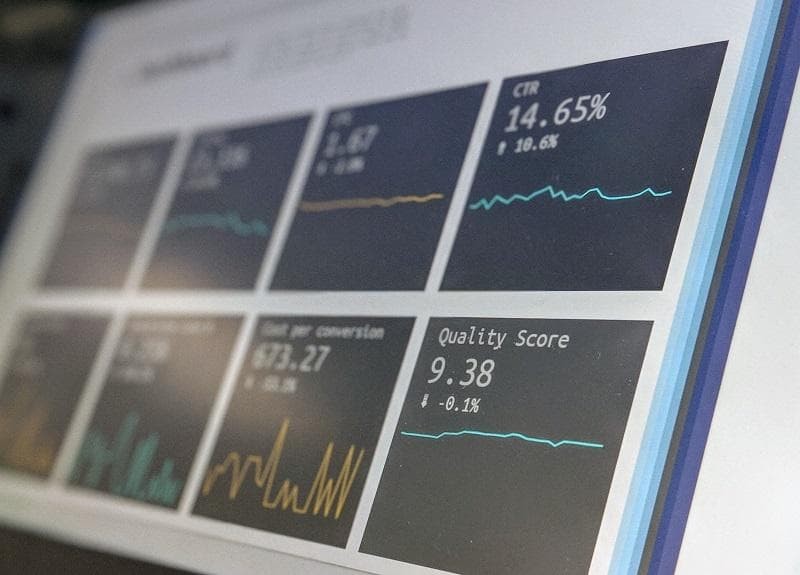Photo by rawpixel on Unsplash
Big Data is exactly what the name implies: large amounts of data. It comes from various sources, namely satellites, cameras, computer databases, microphones, credit records and a whole lot of other digital storage units and devices.Almost everything that is recorded digitally can fall under the umbrella of Big Data: bills, purchases, apps, surveys, and the list goes on and on and on…..
The thing many dislike about big data is that it gathers personal information too – so why is personal information gathered and tracked?
The reasons are many but as far as businesses are concerned, personal data is used to collect and analyze behavioral trends to better market to their customers and target audience and supply them with what they want, when they want it.
Big Data markets around the world are predicted to increase their revenue (software & services) by $61 billion in the next 7 years.
There are 3 main ways businesses and companies collect massive amounts of data from Internet users:
- Opt-ins & Lead Forms
- Smartphone Apps
- Website Cookies
Big Data: Immoral, Illegal, or Good Business Practice?
While collecting such massive amounts of personal information may seem like a private policy issue, nowadays there are many systems set in place to give the user the right to refuse such tracking and data gathering.
For instance, the General Data Protection Regulation, GDPR, was established by the European Commission and took effect on May 25, 2018.
The regulation ensures that all businesses who want to do business in the EU (whether they are EU based or not) – must give the user the right to “Agree” or “Disagree” on being tracked. In addition, EU citizens can request data collection apps, devices, and sites to relinquish and delete all of their personal information.
A host of other Big Data security solutions have risen up over the past couple of years due to the ripple effect of the GDPR and Facebook’s
Cambridge Analytica scandal (2018), which awoke the public at large to the fact that their personal information was not only being collected but shared among third-party collection agencies.
The following tools and software solutions are but a sampling of the recent efforts businesses are making to keep their customers and prospect’s information safe and secure and from falling into the wrong hands:
- Cloud Data Protection (CDP)
- Big Data Encryption
- Data Privacy Management
- Data/Content Subjects Right Management
- Data Governance Management
Giving the right to decline data collection to the end user as well as modern cyber-security software and private data storage solutions have turned a potential privacy violation and ethical conundrum into a viable and moral process which helps businesses run smoother and serve their customers in the best possible way.
Why Businesses Need Big Data
Businesses do not just want to collect and store large amounts of information related to their business, they need it!
Aside from being able to analyze how customers interact with a brand, businesses also use Big Data to find weaknesses in their marketing, production, and customer service levels as well as to spot industry trends before they happen.
Even Henry Ford used information from his environment to expand upon industry trends, which helped him improve his already ground-breaking car production assembly line. He got the idea for the division of labor and interchangeable parts by watching disassembly lines operate at meat-packing plants.
The above example would not be considered Big Data by today’s standards but it was data nonetheless – information that was observed, stored, and analyzed to produce better business results.
Big Data, as it is defined today, can help your business in so many ways: The following list gives a brief sample of some of the areas in which Big Data can help improve a business’s overall operation:
- Time Efficiency:Large amounts of information can be analyzed quickly using machine-learning in order to achieve quick business decisions in less time.
- Cost Savings: Big Data tools allow businesses to reduce manpower, especially in the IT department, as they are mostly comprised of real-time and autonomous systems. Resources can be allocated at a much lower cost and large amounts of information can be stored and processed for much less.
- Current Market Data/Product Development: Through analyzing Big Data, companies can better grasp recent product trends and either produce such products or modify existing products to move ahead of the competition.
- Customer Behaviors: Large amounts of customer data can be used to figure out what customers want and when they want it. Therefore, a business can provide better service, support, and marketing to its target audience.
- Online Reputation: When it comes to protecting a business’s online reputation, Big Data is unmatched. It allows companies to retrieve customer feedback on social media platforms, for instance, and improve any negative reactions through positive outreach.
How to Use Big Data Effectively
It is really not about how much information is collected but how that information is used that is the essence of producing better business results.
To really understand how to use large amounts of data to improve customer service, reduce costs, or speed up business processes, a business must first consider what metrics are important to analyze to achieve such results.
Photo by Stephen Dawson on Unsplash
Deciding on which metrics to focus on and how much of each one to focus is simply a matter of knowing which data set is most indicative of the progress of your company.
Of course, this will be different for each company but there are metrics that fall under the main general business categories which can help turn Big Data into “Wise Data”. These categories and metrics are as follows:
Operations
- Employee Retention
- Employee Productivity
- Customer Support Tickets
- Time to Install
Development
- Status Against Budget
- Status Against Deadline
- Team Productivity
- Recruiting Productivity
- Bug Resolution
Sales
- Revenues vs. Budget
- Sales Force Productivity
- Renewal Rate
- Cost to Acquire
- Time to Acquire
- Customer Lifetime Value
- Market Share
Marketing
- Click Through Rate (CTR)
- Conversion Rate
- Cost Per Lead
- Website Traffic
- Return On Investment (ROI)
- Qualified Prospects
- Competitive Ranking
Finance
- Burn Rate
- Net Cash vs. Net Budget
- Days Receivable
- Days Payable
- Months of Cash Remaining
- Bank Covenant Ratio
When defining your Big Data strategy, make it a company-wide imperative and not just a “special” IT project. In other words, your entire business should use Big Data to either confirm company objectives or refute them.
5 steps which can help accomplish this goal are as follows:
- Identify what’s important to the business.
- Create goals around company imperatives (step 1).
- Prioritize and group goals in the matter of importance and focus on them one at a time from top to bottom.
- Decide which data sources are best for collecting the information your business needs to measure its chosen goals.
- Link the financial value of the company’s data sources to the company’s goals in order to increase the future probabilities of success for measuring those goals.
Always start with the most important goals first!
3 Things You Should Know About Using Big Data for Your Business
To make the process of figuring out how to profit from Big Data easier, the following summary of what has just been said and some extra pieces of advice have been broken down into three simple but effective actionable steps.
These 3 steps are as follows:
1. Collecting Data
Figuring out which data to collect and which metrics to analyze was just mentioned in great detail in the section above but it can not be emphasized enough.
For any business to reap the full benefits of Big Data it must understand what data it needs and how to use it to increase efficiency. Just collecting data to have a large database is of no use if that information is not relevant to the business whatsoever.
If a business spends a ton of resources to collect unnecessary data, the only result will be higher costs and less profitability.
2. Extracting Data
After figuring out what data to collect – which data really matters to the business – the next step is the extraction process. This may seem like a daunting task but it does not have to be if a structured set of guidelines are followed.
The following 9 steps can help any business organize and extract both structured & unstructured data sets for optimal output:
- Data Sources: Choose which data sources are absolutely relevant to the metrics you wish to analyze.
- Data Presentation: How will the results be used? Figure out a plan on how best to use the data to achieve the desired end result.
- Data Storage: The data results and analysis have to be stored in a proper storage unit like a cloud-based information store, for example, in order for proper utilization. There are various factors involved in choosing the proper data storage but the main point is to choose one that can fulfill the requirements of the chosen end result.
- Data Lake: Before storing data in a data warehouse, consider storing it in a data lake where all aspects of the data are left untouched until it is decided how the data will be used. After this decision, the data can be stripped and stored in segmented formats in a larger warehouse.
- Storage Preparation: Before the actual storage process, remove any unnecessary pieces of information like symbols & white spaces as this can often obscure relevant information and make it harder to locate and retrieve it later on.
- Data Retrieval: Make full use of Parts-of-Speech tagging (semantic analysis) to easily extract common name terms like “location”, “person”, or “organization”.
- Category Analysis:After analyzing the data, choose categories in which to segment related sources and extracted data points to structure the data for easier accessibility.
- Data Classification: Once the data has been stored and categorized, it should then be further segmented with the help of machine-learning software. This will assist in locating close similarities between relevant metrics like customer behaviors and product trends.
- Data Visualization:Once the relevant data has been extracted & analyzed, it should be presented in such a manner that concerned parties can easily retrieve it and gain insight from it. For example, data presented in graphical formats which can be displayed on hand-held devices.
3. Monetizing Data
Scheduling regular meetings to review collected and analyzed data will help in figuring out how to best use such information for monetization purposes. The best way to monetize relevant data is to make sure that it can be implemented into a working strategy or plan that assists in meeting business objectives.
Photo by Franki Chamaki on Unsplash
Even though data monetization is an ever changing and ever expanding field that is particular to each business’s goals and needs during its various business cycles, there are some common monetize uses of Big Data that many businesses seem to employ.
Here are the 8 most common ways businesses monetize their data:
- Revenue Leaks: Using Big Data analytics, businesses can identify invoice mistakes and errors, as well as help in gathering information for collection purposes.
- Customer Satisfaction: The ability to gather information about customer satisfaction through social media analysis and surveys, has given businesses the ability to create more brand loyalty by providing their customers what they want when they want it.
- Product Development: Big Data allows organizations to create more products and thus more revenue streams by spotting trends and gaps in the market before their competition does.
- Fraud Detection:Businesses that use multiple channels and avenues to deliver their products to their target audience can use Big Data to spot price fraud and piracy before it gets out of control.
- Customer Retention:Information gathered on customer churn can help organizations of all shapes and sizes figure out when customers leave, why they leave, and how to best persuade them to stay.
- Profitable Marketing:Customer behavior can be analyzed across multiple data points using Big Data tools and analysis and so create better targeting for marketing purposes. The result is a higher marketing ROI.
- New Business Models: Companies can use Big Data to discover untapped areas within their market and even new business ventures in order to keep them relevant and on the cutting-edge of today’s constantly changing business environment.
- Redefining Value: Big Data assists businesses in redefining what value means by gathering, segmenting, and analyzing customer information, product information, and market trends. This helps them provide their customers and prospects with consistent value-based products, services, and information that coincide with the times.
Can SMBs Have Access to Big Data Analytics Capabilities?
Small and medium businesses don’t have the means to have on-site databases with the capacity to store, process, and analyze large amounts of data, which is why big data servers that are hosted in the cloud are a much better option.
Standard servers used by small businesses also lack the right security measures for such large amounts of sensitive information. Big Data is not just data but concepts which need to be collected and processed to deliver the desired outcome. Standard hosting servers are not built to comprehend such concepts.
Big Data Cloud Storage & Hosting Benefits
Big Data platforms, comprising of cloud storage and dedicated hosting, are specifically designed to deal with unstructured data collected from various different sources that use a host of different formats. The ability to extract such varied pieces of information requires a database that can uncover relationships among the clutter – a job not fit for traditional on-site databases used by most small and midsize businesses today.
Some of the other major benefits of using online Big Data cloud storage & hosting include:
- Faster Speed of Processing
- Increased Security Measures
- Built-In Analytical Infrastructure
- Unlimited Storage Space
- Disaster Recovery (automated data backups)
- Decreased Costs (no need to build and store data centers on-site to deal with large amounts of unstructured data)
- Faster Time to Value (management & analytical applications can be built on demand)
Final Words
The digital age has brought many changes to businesses around the world and Big Data has played one of the major roles in this regard. Big Data analytics has made it possible to accomplish feats that would have taken months, if not years, for a business to accomplish. That too, in real-time!
Any business wishing to move forward and thrive in this digital age must learn to use Big Data wisely and utilize storage components that allow ease of access, ease of processing, and ease of collection to maintain data integrity.
Big Data is not going anywhere, so as a business owner you should seriously consider developing a Big Data strategy for your business if you already haven’t in order to take advantage of all the wonders this technology has to offer.
Jen McKenzie is an independent business consultant from New York. She writes extensively on business, education and human resource topics. When Jennifer is not at her desk working, you can usually find her hiking or taking a road trip with her two dogs. You can reach Jennifer @jenmcknzie




